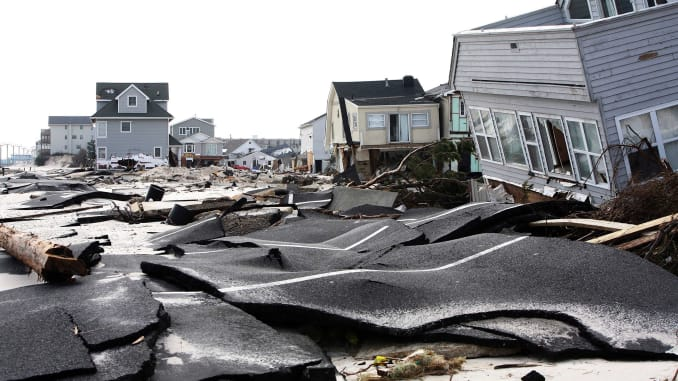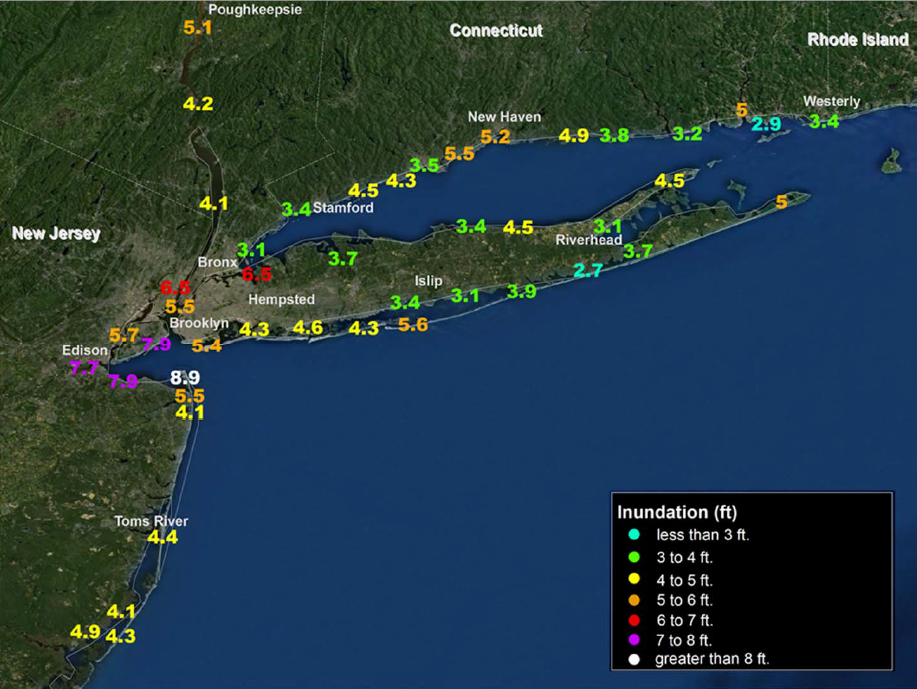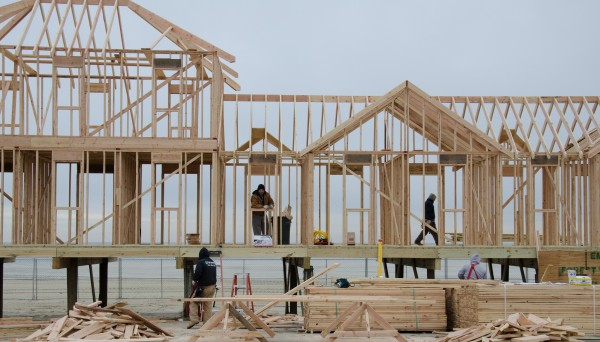Super Storm Sandy: On Recovery and Resilience in
New York, through One Homeowner’s Perspective
Lessons from Past Floods: Part 3
In this three-part series, we explore three flooding events from recent years to see what we can learn about the damage they caused, how flood risks are rising, how local and federal officials responded, and how communities are building flood resilience in their wake.
In late October 2012, Super Storm Sandy made landfall along the East Coast. Second only to Katrina in its time as the costliest disaster on record in the United States, Super Storm Sandy brought historic damage to one of the largest cities in the world and its surrounding area.
Eight years later, as New York City continues to recover from the tragic losses of the COVID-19 pandemic, resilience – in the face of all kinds of emergencies – is top of mind. One homeowner from the Rockaways shares her experience that shows what Super Storm Sandy response and recovery looked like on the ground, and how the East Coast is rebuilding its communities stronger for future floods.
The Flood Damage: When a Super Storm Batters America’s Largest Metro Area
Nicknamed “Super Storm Sandy,” Hurricane Sandy was a Category 2 storm that became the largest Atlantic hurricane on record.
After making its way up the Eastern Seaboard, Sandy tore through New York City and its suburbs, Long Island, and New Jersey over the course of several days, leaving behind a path of destruction rarely seen from a single weather event in the region.
Here’s an overview of Sandy’s damage, in numbers:
- More than 117 Americans died.
- 200,000 homes were damaged.
- More than 8 million people across the U.S. had power outages following the storm.
- The total Super Storm Sandy recovery costs were estimated at $65 billion, with roughly half of that going to New York State.

Figure 1: Homes damaged in Ortley Beach, New Jersey. Source: Tim Larsen, Governor’s Office/Reuters
A preview of the worst days of the pandemic, the hustle and bustle of New York City came to an almost complete halt during the 2012 storm: the subway system, the stock exchange, and several large hospitals closed, while much of the city was left without power and wading through feet of floodwater.
Many communities across New York, New Jersey, and New England were faced with damages they had never needed to brace for before.
The Flood Risk: A Storm Surge that Inundated “Non-Flood Zones”
In addition to powerful winds and torrential rains, Sandy caused a storm surge, a tsunami-like phenomenon following a tropical storm that pushes a wave of seawater ashore. It was this storm surge that devastated low-lying coastal communities across the East Coast, like Rochelle Grubb’s home in The Rockaways, Queens.

Figure 2: A map of floodwater totals following the storm surge in the New York City tri-state area. The Rockaways, Queens, located just below the southern edge of Brooklyn, experienced upwards of five feet of flooding. Source: National Hurricane Center Sandy Report
The irony was that just a year earlier, Rochelle and her family were told they were no longer at risk of flooding. “When I purchased our house in 2002, they wouldn’t let me get a mortgage until I had flood insurance…. Then right before [Hurricane] Irene happened, I received a letter from the insurance company saying they are dropping my flood insurance because I am no longer in a flood zone.”
That wasn’t a problem following Hurricane Irene in 2011, as the storm came and went with minimal flood damage to Rochelle’s community. Then Sandy arrived, bringing catastrophic flooding to The Rockaways. “Our house was knocked off the foundation because we were the first house off the corner, so I feel we got the brunt of it,” says Rochelle.
Thousands of homes were destroyed beyond habitability following Hurricane Sandy, including Rochelle’s. But thankfully, communities like the Rockaways across the East Coast have rebuilt.
The Super Storm Sandy Response: Reform and Repair from the Top Down, from Washington, DC to The Rockaways
On a federal level, one important change after Hurricane Katrina in 2005 helped the East Coast better respond to Sandy. The Post-Katrina Response Act allowed state and local governments to declare a state emergency ahead of the storm. This way, these groups were able to better work with FEMA and other federal agencies to get the supplies they needed to protect and repair their properties.
This proactive, rather than reactive, government approach was key in both immediate Hurricane Sandy responses and long-term mitigation projects.
Sandy also brought about significant legislative reforms that have benefitted storm responses across the country: in 2013, President Obama signed H.R. 41 (Public Law 113-1), which increased the borrowing authority of FEMA by almost $10 billion as an emergency requirement, meaning the agency could continue to pay flood insurance and other disaster-related claims.

Figure 3: Rebuilding after Hurricane Sandy in Seabright, New Jersey. Source: FEMA
On the local level, communities like Rochelle’s rebuilt stronger from the ground up. Structural protection was the first step: “When we rebuilt the house, we had to make all the necessary flood prevention measures or else we would not clear inspection,” says Rochelle.
Elsewhere in The Rockaways, which received heavy media attention at the time as a spot of heavy damage, the boardwalk has been rebuilt, parks have reopened, businesses have returned, and the homes that were destroyed by Sandy have been fortified against future flood damage.
Want to learn more about flood prevention? Head to our Intro to Flood page.
The Future: Homeowners and Policymakers Drive Flood Mitigation for the the East Coast
While the impacts of the COVID-19 pandemic are at the forefront of New Yorkers’ memory today, the effects of Hurricane Sandy are not forgotten, especially as hurricane season still looms. Coming out of both historic events, New Yorkers and officials alike learned to make sure damage of the same scale would never be seen again.
New York City Mayor Bill de Blasio announced a Lower Manhattan Resiliency Plan in 2019, which would construct flood barriers around Lower Manhattan and possibly extend the shoreline. New York Governor Andrew Cuomo has also introduced a plan for infrastructure development and economic safeguards designed to mitigate future losses by rising seas due to climate change by up to 25 percent.
And Rochelle and her family have settled into their new home in The Rockaways, now with peace of mind that they’re better protected by a strong foundation and the flood insurance they need for future storms.
The Lesson: Make Flood Insurance and Flood Protection a Priority for All in Coastal Communities
There have been many compounding emergencies in 2020, notably wildfires ravaging the West Coast and hurricanes pounding the South and East amidst an ongoing pandemic. The severity of both simultaneous public health and weather events underscores the need for resilience and proactive mitigation for each.
Rochelle says that all things considered, The Rockaways is doing well today: “Before the pandemic, I feel we came back really strong.” If Rochelle’s story has a happy ending, it’s because her community and the East Coast at large have learned from Sandy’s devastation to build stronger infrastructure and secure the financial protection needed for all homeowners who have a flood risk.
Know you need flood insurance? Get started with an agent now.
Blog Articles
